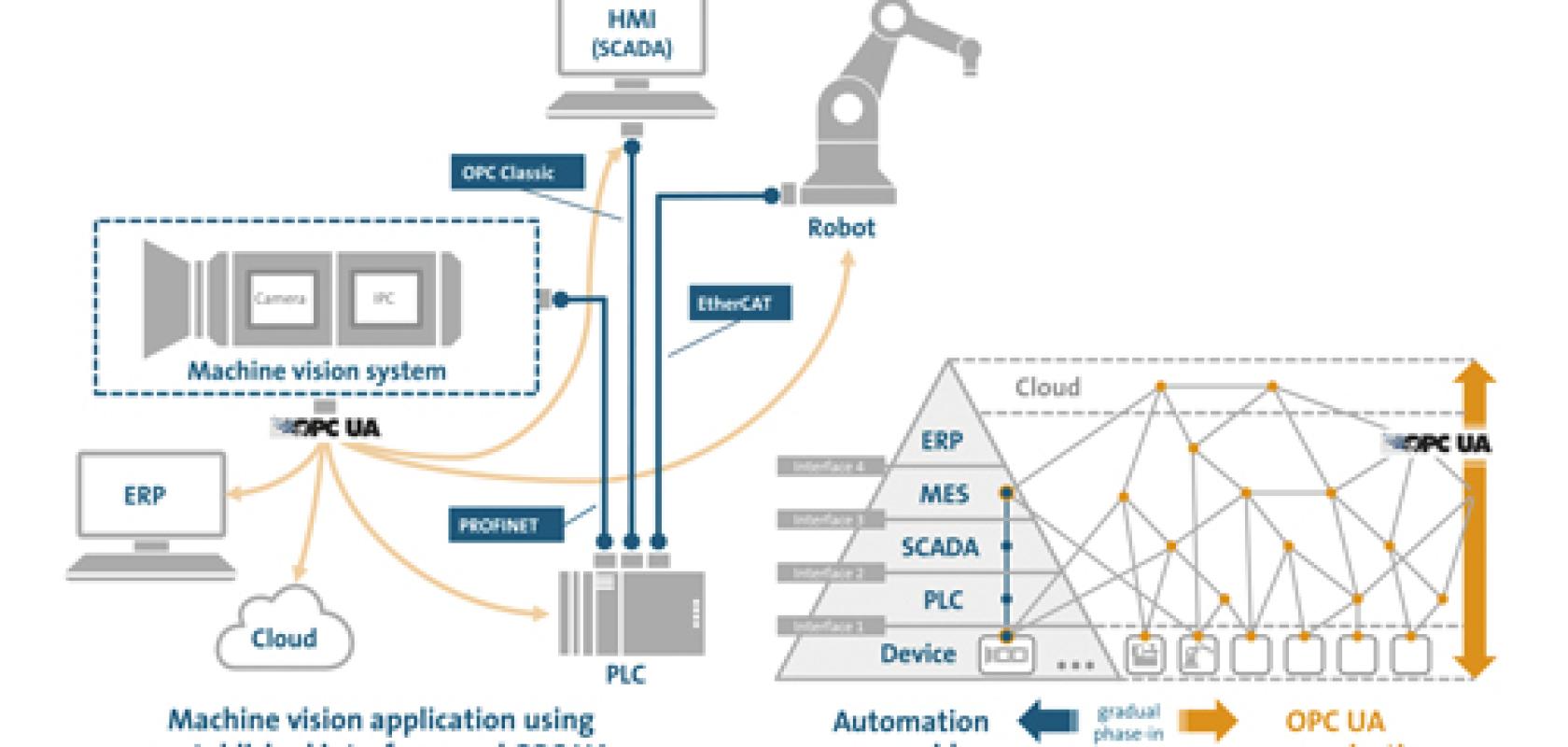Dr Reinhard Heister at VDMA Robotics and Automation on the plans for the new OPC Vision standard
An OPC UA companion specification for machine vision (OPC Vision) was published at Automatica in June 2018, thanks to the commitment of the working group (Asentics, Isra Vision, Kolektor, Kuka, Peer Group, Robert Bosch Manufacturing Solutions, Sirius Advanced Cybernetics, Silicon Software, Stemmer Imaging, Unified Automation and Vitronic). What has happened since then, and what plans are there for the future?
Since the VDMA OPC Vision initiative is a joint working group of VDMA Machine Vision, OPC Foundation and other international machine vision associations (AIA, EMVA, JIIA, CMVU), each organisation has its own rules regarding the process for the final release. Those of the VDMA are based on the full consensus standardisation of DIN, the German institute for standardisation.
On 1 November, the VDMA specification sheet 40100-1 was published as a draft in the DIN-Publisher for Technical Rules, which is accompanied by a two-month public commentary phase, ending on 31 December 2018. The G3 commenting phase has already been finalised; the technical committee of OPC Foundation will also proof the final draft. After all these release processes have been completed, OPC Vision will be ready for final release from Q1/2019. The process sounds complicated, but is necessary to give all involved players the chance to check and proof the content before it’s released officially.
What needs to be done?
So far, OPC Vision Part 1 has been specified to the best of the working group’s knowledge and belief. For a credible and sustainable release of the standard, the working group’s ambition is to implement the specification and test it using a real example. Implementation and testing activities have already started; results will be available in Q1/2019. This will help the working group identify possible errors and eliminate them before the final release in Q2/2019.
What happens after part 1?
As Part 1 implies, the VDMA OPC Vision initiative does not end with its release. Part 1 lays the foundation, a kind of infrastructure layer, that enables a simplified and uniform integration of all possible machine vision systems into higher IT production systems (PLC, SCADA, MES, ERP, Cloud, etc). The idea is that, in subsequent parts, other proprietary elements will be broken down and replaced by standardised information structures and semantics, such as configuration, recipe and result information. One conceivable approach is to specify this using machine vision capabilities, such as presence detection, completeness check, position detection, etc.
There is another line of development: the vertical extension into the components of a machine vision system. A working group has been formed to examine how GenICam could be combined with OPC Vision to enable new applications and business models. GenICam is a software interface standard at the component-level; if it becomes possible to exchange relevant information at the component-level beyond the machine vision system-level, new applications will become possible, such as predictive maintenance of machine vision components.
Exciting times ahead
Anyone who deals with OPC UA will realise that the development of OPC UA companion specifications achieves domain-specific interoperability, but that the great challenge lies in cross-domain interoperability. Here, the VDMA plays an important role, as hardly any other association represents so many branches of mechanical engineering. In order to give its members even more benefit and investment security, VDMA is pursuing the goal of achieving cross-domain harmonisation in the long term. However, this is subject to an evolutionary, rather than a revolutionary process.
To learn more about OPC Vision Part 1: http://normung.vdma.org/en/viewer/-/v2article/render/26815453


